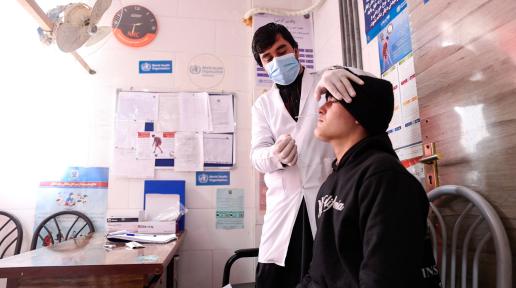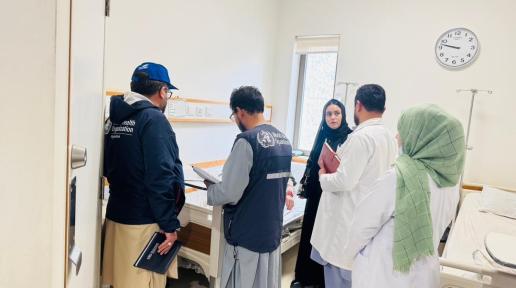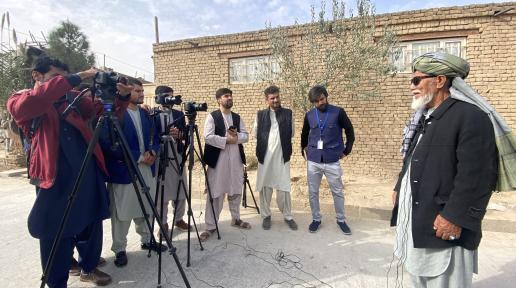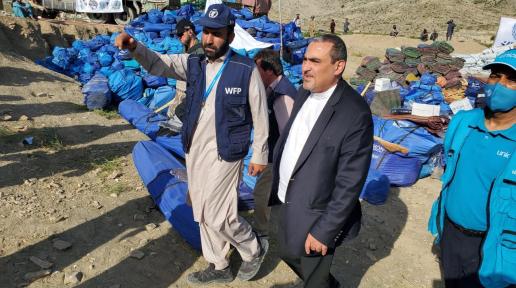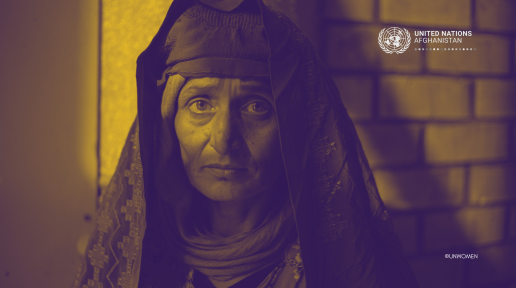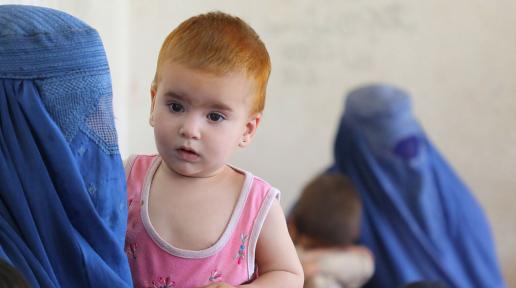کیسه
23 December 2025
“I Don’t Let My Disability Define Me”: Jan Mohammad’s Story in Afghanistan
Living in a small house built of mud and bricks with his wife, daughter, and four sons aged between five and 14, his everyday life is a constant struggle to provide for his family and to keep hope alive.Two decades ago, Jan Mohammad’s life changed forever when he was caught in crossfire. The incident left him with serious leg injuries, creating a permanent obstacle to walking and working as he once did. After a long recovery process, Jan Mohhamad started learning to weave carpets in a factory – a job which he could manage with the physical disability affecting his legs. However, when a landmine later exploded near his home and he lost three fingers from his left hand, he could no longer pursue carpet weaving as a profession. Despite the severity of the multiple incidents he has survived, Jan Mohammad has never been defeated by his disabilities. On the contrary, he is determined to do everything possible to support his family and ensure his children receive an education, despite the significant socioeconomic barriers.“What matters most to me is having a job to support my children so that they can learn and dream of a future I never had,” said Jan Mohammad. In Afghanistan, Jan Mohammad’s story is one shared with countless others. Decades of conflict have led to many Afghan people suffering from injury, trauma, psychosocial distress and interrupted healthcare. Accidents resulting from explosive ordnance, but also diseases like polio, limited access to prenatal and maternal care and overall poor healthcare services have resulted in a high number of persons with disabilities that might have otherwise been treated. UN OCHA’s Humanitarian Needs and Response Plan (HNRP 2025) underscores the significant socio-economic challenges faced by households headed by persons with disabilities in Afghanistan. These households experience an unemployment rate that is about five times higher than the national average, and increased rates of child labour, affecting 31% of these households compared to 15% nationally. They also report the highest average debt levels, amounting to AFN 52,498 (USD 783) compared to the national average of AFN 37,433 (USD 558). In terms of food security, 35% of households headed by persons with disabilities report poor food consumption scores, and 41% experience moderate hunger. Such socioeconomic barriers not only limit access to basic services but also perpetuate inequalities, leaving persons with disabilities and their families further behind. Struggling to walk and unable to weave carpets, Jan Mohammad was left feeling alone. Yet, he did not give up. “I don’t let my disability define me,” he says. Despite the significant hardships he faced he persevered in seeking daily employment, driven by his determination to stand on his own and provide for his family. In July 2025, Jan Mohammad began to feel hopeful when he heard about a Cash-for-Work (CfW) programme launched by UN-Habitat with support from the Government of Japan through the Japan International Cooperation Agency (JICA), the CfW programme was part of the Project for the Improvement of Living Environment for Vulnerable People in Urban Areas. The CfW initiative provided short-term income-generating opportunities to families in vulnerable situations, with the objective of helping them meet their most immediate needs. As is the case in many informal settlements across Kabul, Jan Mohammad’s community faced challenges such as uncleared waste clogging the drainage systems and uneven roads, leading to serious safety, health and hygiene concerns. CfW activities were designed to address these issues by road levelling, drain cleaning, and the removal of accumulated waste. Through this project, 50 people including Jan Mohhamad were provided with employment for two months to improve the living environment of their urban community. Shamsulhaq Noori, who worked alongside Jan Mohammad, recalled, “Jan Mohammad worked tirelessly like the rest of us. He didn’t use his physical limitations as an excuse. He always worked with honesty and pride.” Earning AFN 350 (approximately USD 5) per day, Jan Mohammad received his first payment at the end of the first month. The 7,700 AFN (approximately USD 110) made him proud and hopeful. “For the first time in months, my family had enough food to eat without borrowing money from neighbours,” Jan Mohammad said. The dinner his family had that day was his youngest son’s favorite dish: rice with potatoes, locally called Palao. “We spent most days with only one meal, and we could barely afford two. Our life has never been easy,” said Bibi Kafia, Jan Mohammad’s wife. “But for that one meal, it felt like things might get better tomorrow.” When Jan Mohammad received his next payment, his joy grew. “Now, I feel an overwhelming sense of relief and happiness. I proudly brought home flour, rice, stationery, and clothes for my children. That work and the salary I received gave me hope, dignity, and a renewed belief that hard work still has value.” His children also noticed the difference at home. Mohammad Saber, his second son who is in grade 7, said, “My father bought us new notebooks and pencils. I was glad that I can now go to school with my new study materials.” “The support through this programme has reached people like me — the poor, the persons with disabilities, and those who have been struggling all their lives just to survive.” Thanking the Government of Japan for the support, Jan Mohammad continued, “This opportunity reminded me that even those who have suffered injuries or hardships still can contribute to the society and live with pride.” Although the project offered Jan Mohammad a brief moment of relief, the challenges he faces remain substantial. But he remains determined and hopeful, even when opportunities seem diminished. “I will continue to look for any work to search for work and provide for my family,” he said. Across Afghanistan, countless families like Jan Mohammad’s struggle with poverty and uncertainty. According to the HNRP 2025, almost half the population—48%—lives in poverty. With the economy in decline, limited employment opportunities, weak investment in infrastructure and basic services, and reduced aid from the international community, many Afghan households are struggling in poor living environments, relying on short-term work just to survive—holding on to hope for a better tomorrow.



